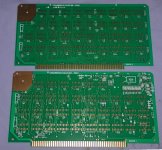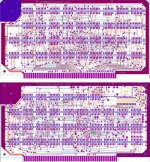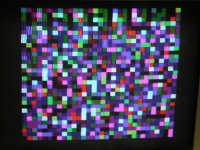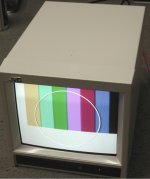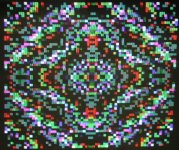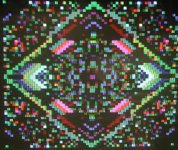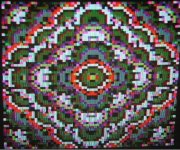Hugo Holden
Veteran Member
Finally making some progress on the replication of the original Cromemco Dazzler.
The pcb's were a real challenge. I used my tried and tested method of hand drawing them as a jpg image in Microsoft Picture IT, because I don't have any pcb software.
Attached images of the pcb's and some of the exotic diagrams created along the way. Sorry about the reso, had to shrink the files to be able to post.
I went over the design many times to get it as close as possible and error free. (of course not tested yet).
My pcb maker here in AU has a method where he can convert the images into an Altium pcb file, and arranges to get the geometry 100% correct for the IC pin arrays etc.
(There are geometry errors on the S-100 connector on Cromemco's original foil patterns, which is interesting, not enough so they wouldn't work though, but that got corrected).
I decided to "go all the way" with the pcb quality, all gold, pads, tracks and vias. It is an extravaganza with over 70 IC's.
I have acquired all the components, including the original type of Xtal, ceramic tuning capacitor and IC set, but I was not happy with the quality of the IC sockets I could get from local suppliers, so I have ordered gold machine pin original Augat types from the USA which are superior quality.
So with any luck I should be able to assemble it and test it in the next month and start playing with it and the software.
I will post the progress on this thread. Its like I'm back in 1976 assembling the "kit" , I'm sure it would have been just as exciting back then to do it.
The pcb's were a real challenge. I used my tried and tested method of hand drawing them as a jpg image in Microsoft Picture IT, because I don't have any pcb software.
Attached images of the pcb's and some of the exotic diagrams created along the way. Sorry about the reso, had to shrink the files to be able to post.
I went over the design many times to get it as close as possible and error free. (of course not tested yet).
My pcb maker here in AU has a method where he can convert the images into an Altium pcb file, and arranges to get the geometry 100% correct for the IC pin arrays etc.
(There are geometry errors on the S-100 connector on Cromemco's original foil patterns, which is interesting, not enough so they wouldn't work though, but that got corrected).
I decided to "go all the way" with the pcb quality, all gold, pads, tracks and vias. It is an extravaganza with over 70 IC's.
I have acquired all the components, including the original type of Xtal, ceramic tuning capacitor and IC set, but I was not happy with the quality of the IC sockets I could get from local suppliers, so I have ordered gold machine pin original Augat types from the USA which are superior quality.
So with any luck I should be able to assemble it and test it in the next month and start playing with it and the software.
I will post the progress on this thread. Its like I'm back in 1976 assembling the "kit" , I'm sure it would have been just as exciting back then to do it.

